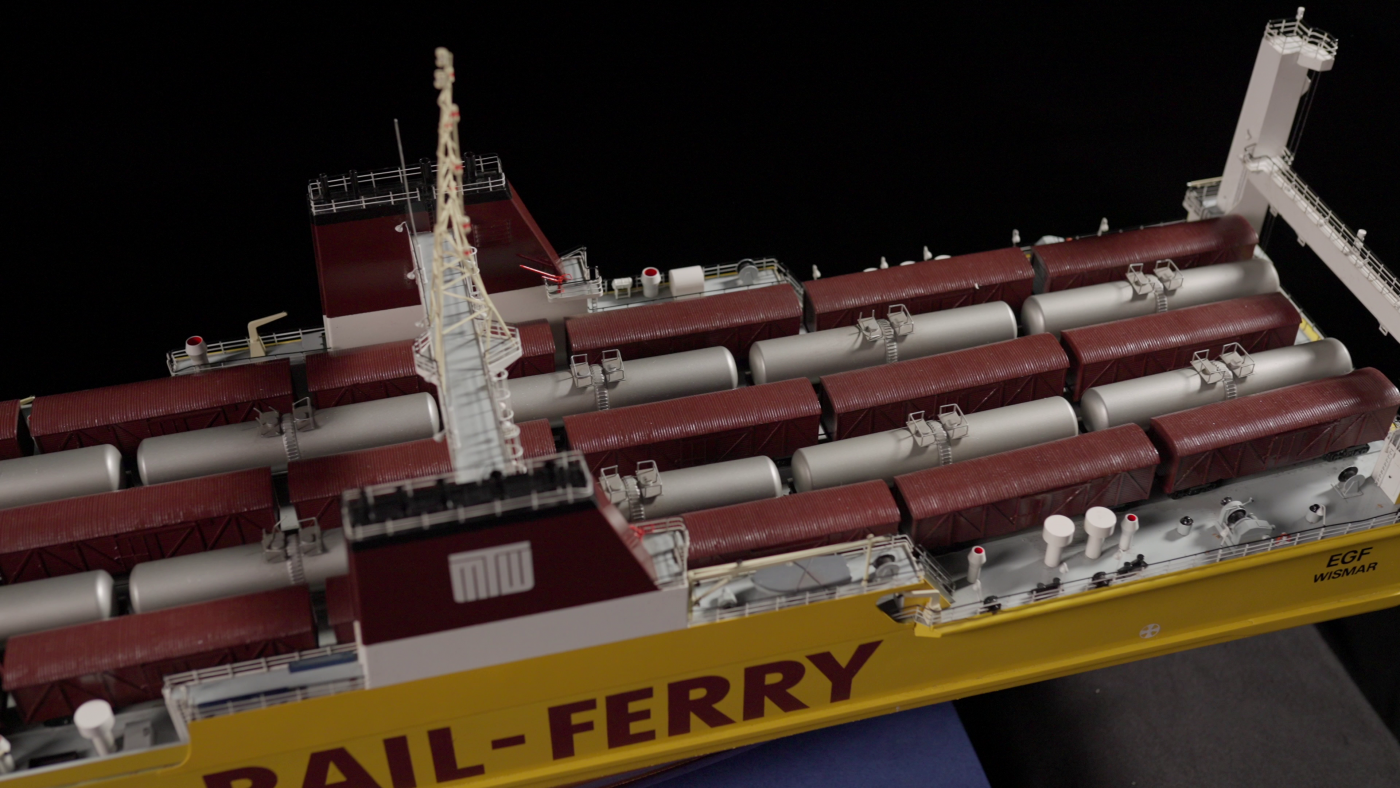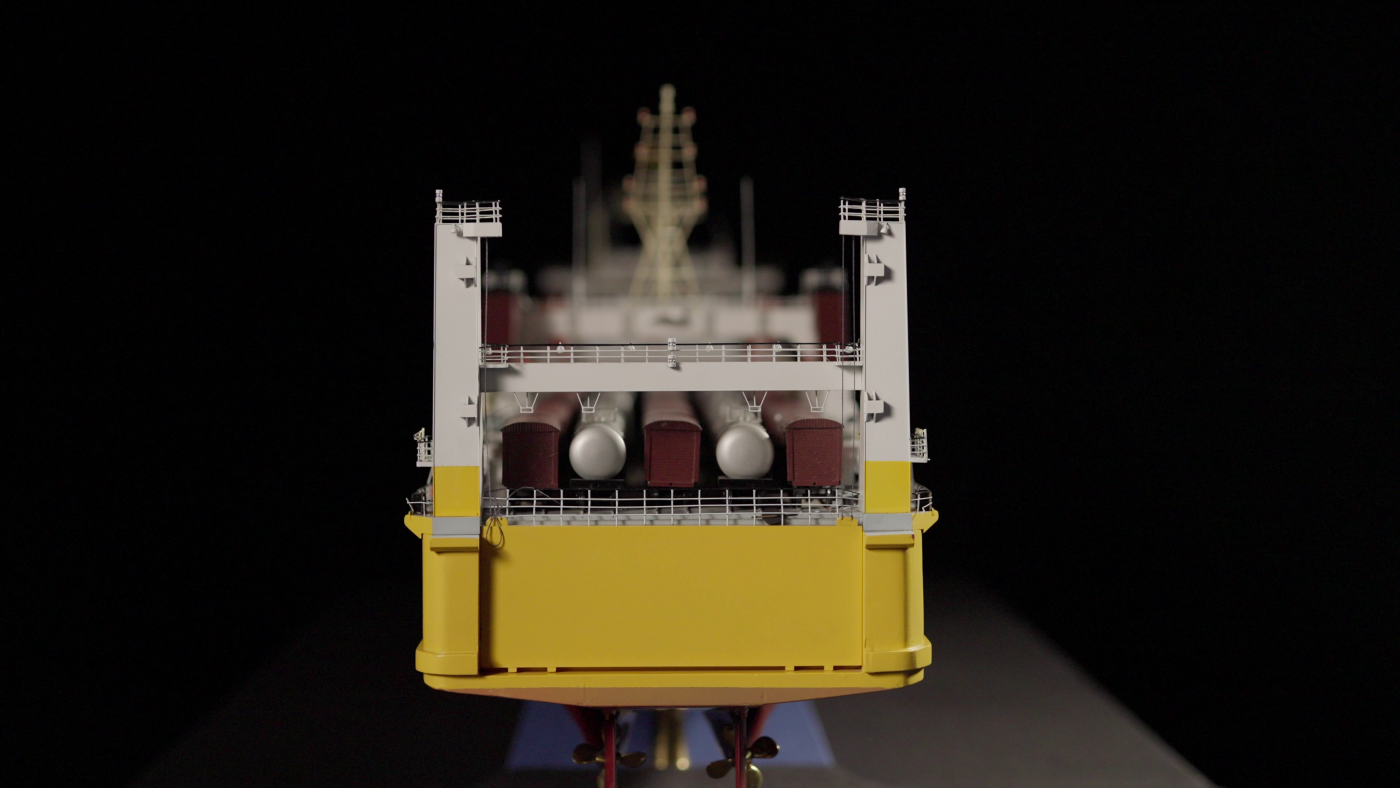Maritime Innovation In Miniature
Cold War Rail Ferry : TYPE EGF-321
This is a model of a rail freight ferry built in the German Democratic Republic in the late 1980s, at the height of the Cold War. Known as TYPE EGF-321 these were the largest ships built in the GDR and the largest railway ferries in the world.
The word Eisenbahngüterfähre with its abbreviation EGF means ‘railway goods ferry’. Today we are familiar with roll-n-roll off ferries, but the concept actually started with train ferries in the 1830s, well before motor vehicles even existed. The first rail ferries in the 1830s were simple open barges to cross non-tidal rivers, or canals. By the 1980s they had reached the peak of engineering innovation.
Russia was East Germany’s most important trading partner. Rail and passenger links between the two countries had reached capacity by the late 1970s and political unrest in Poland meant that an overland route was unsustainable. In June 1982, the Joint Government Commission of the USSR and the GDR agreed to set up a rail freight ferry line between the two countries from Mukran in Germany to Klaipeda in Lithuania.
This was a major commitment: more than five million tons of goods were to be transported annually: up to 30 percent of all freight traffic between Russia and East Germany. Six ferries of this type were to be built at the Mathias-Thesen shipyard in Wismar; three for the GDR and three for Russia although five were only completed, two for East Germany and three for Russia.
They were purely designed to carry rail freight though there were suspicions in the West that they could be used to transport military personnel and vehicles. They were operated by a crew of 42, in individual cabins. Six two-person cabins provided accommodation for guests.
The colour is unusual as none of the completed vessels were actually painted this way. Although there are several explanations, this certainly made it possible to have the model on display without endorsing any specific operator - at a time of high political tension. The ships were equipped with tracks in Russian broad gauge on both decks, which meant that a freight capacity 35 percent higher than that of standard gauge wagons was possible.

There were 1,539 meters of usable track on board. And 103 freight wagons could be transported, with 49 cars on the main deck and 54 on the partially open upper deck. The loading and unloading of both decks took place via landside double-deck bridges, and two ‘double deck dock levellers’ were built in each ferry port to load and unload two ferries at the same time.
It was intended that the entire loading and unloading process would take no more than four hours per ship. After full commissioning it was intended that up to 1250 wagons could be dispatched per day. An entirely new port at Mukran on the Island of Rügen was built specially by the GDR for the service. Loading heavy railway carriages posed significant engineering and logistical challenges to ensure the stability of the ship was not endangered. The solution was an automatic heeling compensation system located amidships which ensured a relatively stable position for the ships during the loading process but which also dampened rolling at sea.
A vulnerability in all ships of this type was the tailgate – here it was 18 and a half metres wide and was hoisted 6 m above the upper deck during loading and unloading. When unloading, the outer tracks were unloaded first, and both at the same time, to maintain stability.

The ship has an unusually high side of 15 metres. Such high-sides are characteristic of train and car ferries and creates a large intact freeboard enabling them to survive remarkable angles of heel. The ships are divided into twelve watertight compartments by eleven transverse bulkheads extending from the bottom of the ship to the main deck though the huge internal carriage deck was a very high risk area because it could not be compartmentalised.
It was imperative that it was kept entirely watertight, otherwise the ‘free surface effect’ of even a small amount of water would cause the ferry to capsize very quickly. She was powered by Four diesel engines, each with an output of 3,660 hp and could reach a cruising speed of 16.6 knots. In addition, there are two transverse thruster systems in the bow, each of which ensured good manoeuvrability.
With the collapse of the Soviet Union in 1989 rail traffic on this route significantly decreased and only temporarily revived between 1990 and 1994 when it was used for the withdrawal of Soviet armed forces. Although train ferries are still in use today, this unique era of the great Baltic train ferries of the Cold War - has long past.

